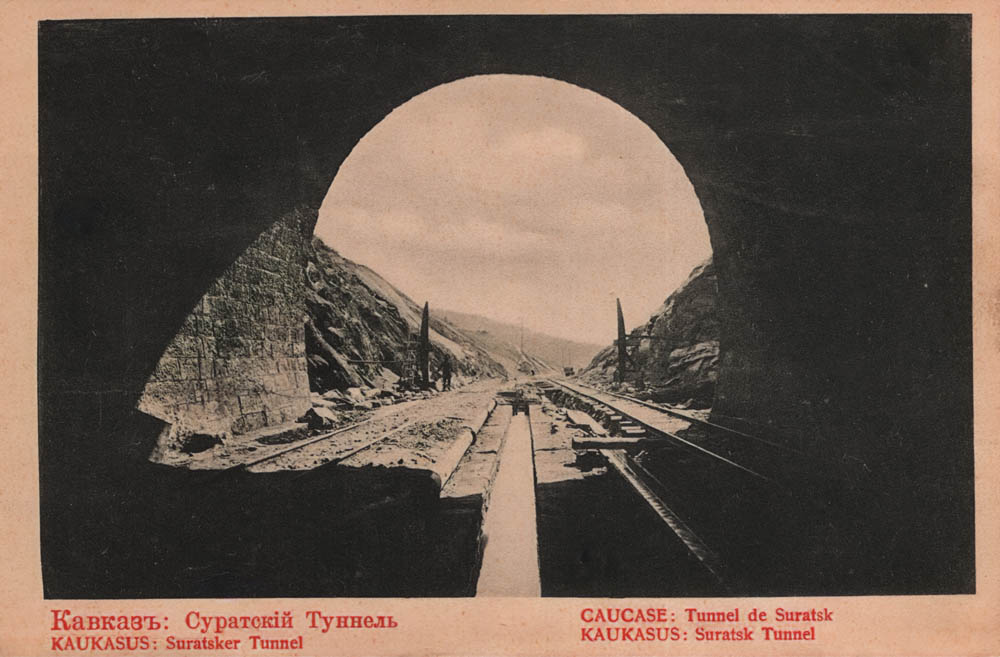The Surami Tunnel was designed to provide a convenient crossing of the Surami ridge, which divides Georgia into Eastern and Western parts.
Although a railway over the ridge was constructed in 1872, the route was dangerous and required the use of pusher locomotives.
Drilling of the new tunnel began on June 6, 1887, and was completed on October 12, 1888, (at 7 a.m.)
Building stone for lining the tunnel was sourced from across Georgia—granite from Gelati (near the city of Kutaisi), basalt from a quarry in the Borjomi Gorge, sandstone from the Dzegvi quarry near Mtskheta…
Timber for construction was procured in Borjomi.
For telegraphic communication, an 11-core cable was laid through the tunnel: 6 of the cores were designated for the needs of the Transcaucasian Railway, while the remaining 5 were allocated to the postal and telegraph district.
The total cost of constructing the tunnel was 5,224,996 rubles, significantly less than the estimated budget of 7,258,775 rubles.
Approximately 2,000 people were involved in the tunnel’s construction.
At the time, there were no specialists in Russia—or even in the Caucasus—with experience in mountain construction, so experts from Germany and Italy were brought in for the job.
Other skilled workers and laborers were recruited from Russia’s interior provinces as well as abroad: from Persia, Turkey, Greece, and Italy.
The grand opening of the Surami Tunnel took place on September 16, 1890.
